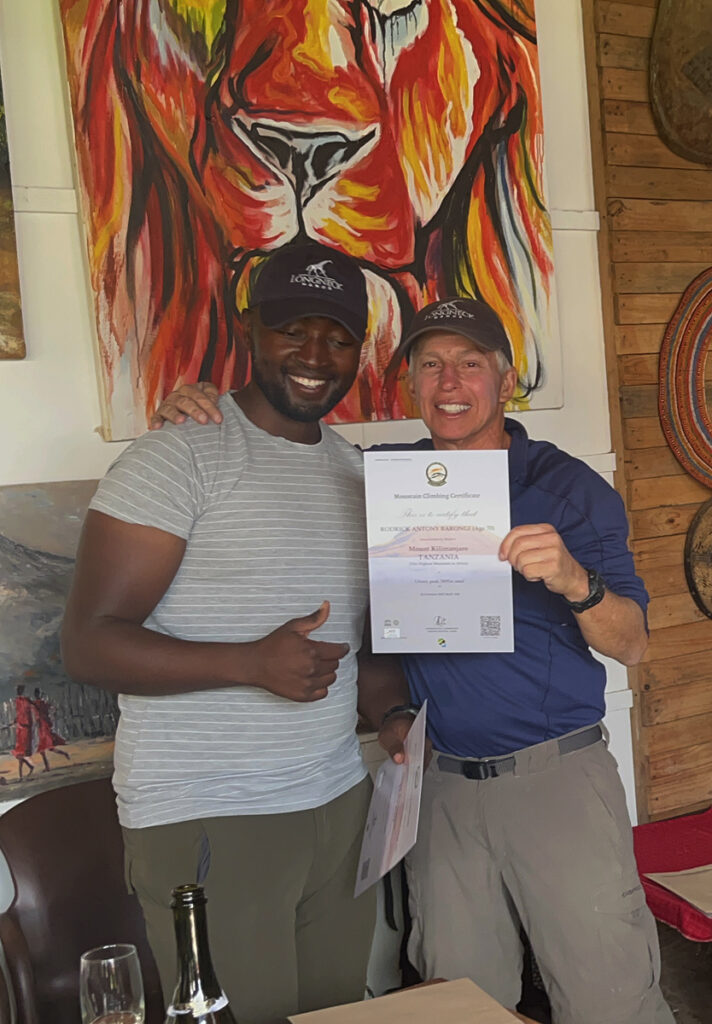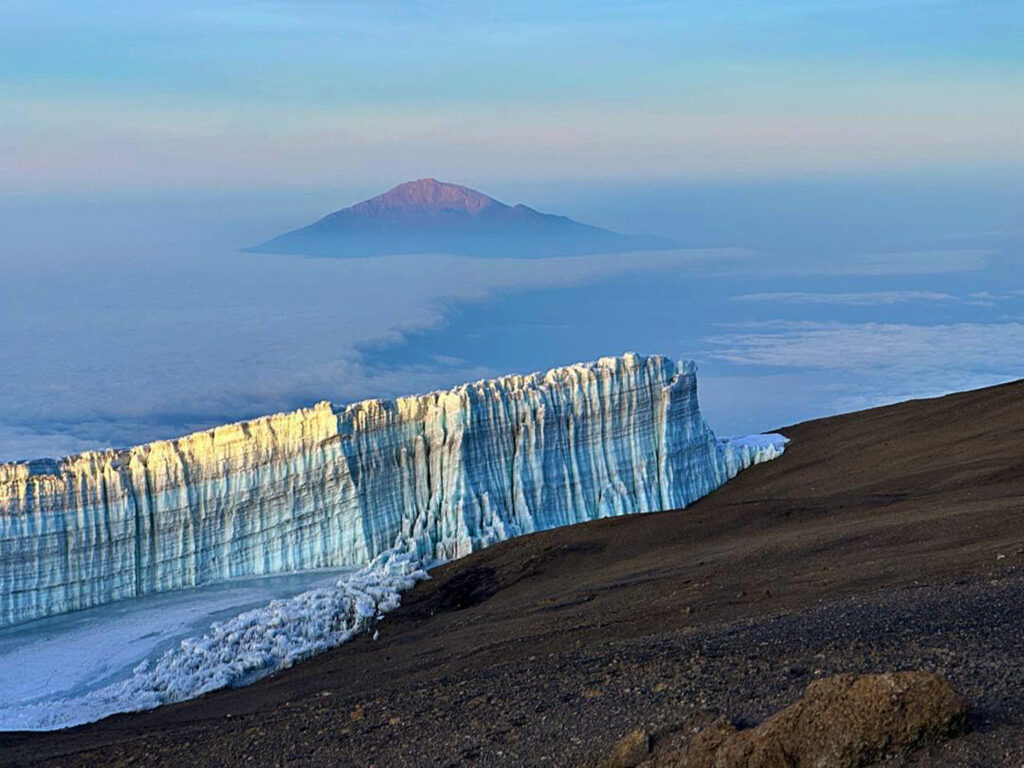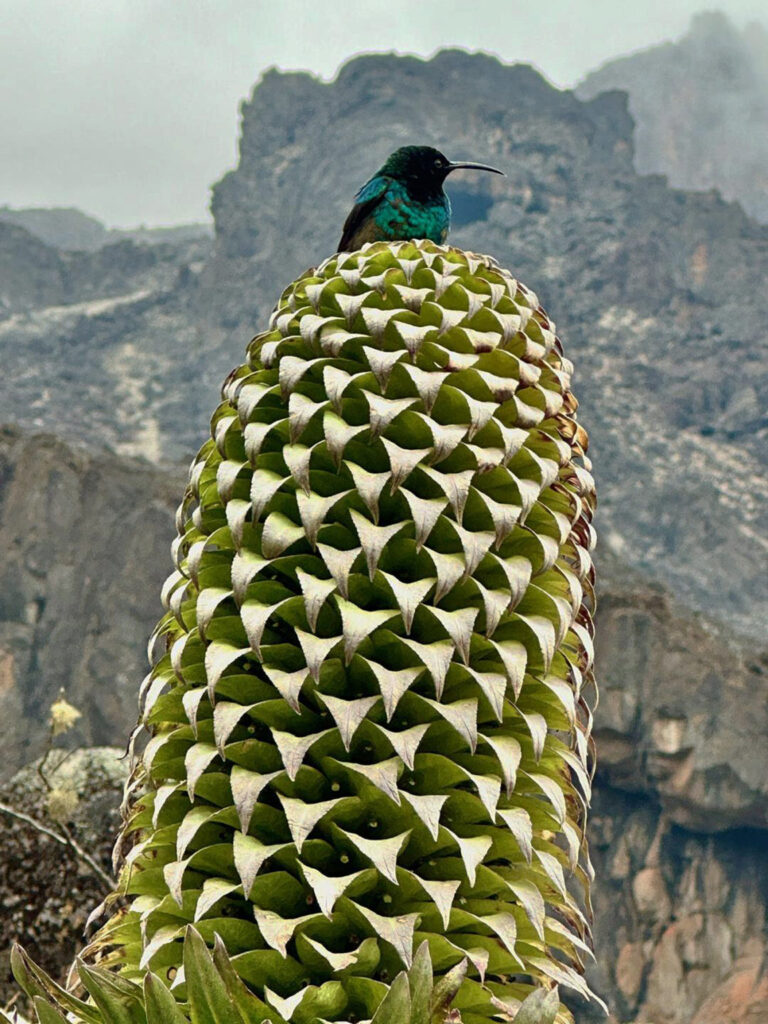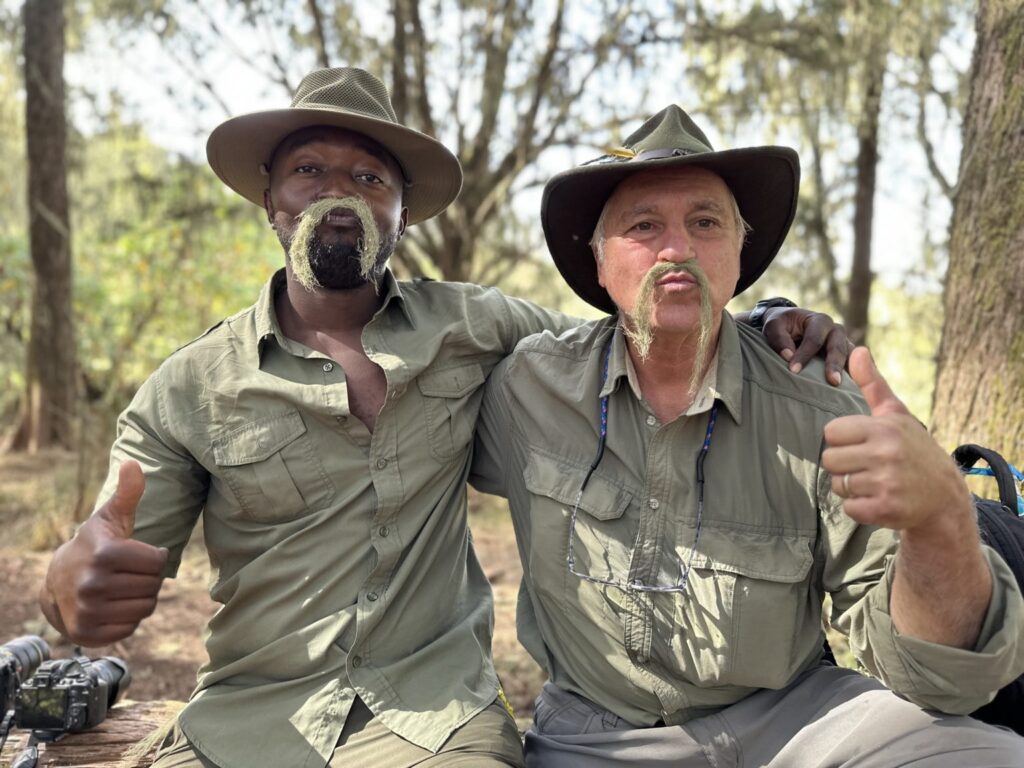by Bill Konstant
Our wake-up call came at 11:00 pm on October 20th. That’s right, late that night, not the next morning. Rick and I had barely cat-napped, buried in our sleeping bags inside a tiny, wind-whipped tent. We tried our best to stay warm, a thin sheet of nylon providing little insulation against the sub-freezing air that surrounded us at 15,800 feet. The cramped quarters and our combined caloric output provided some minimum thermal advantage, but the fact that we hadn’t showered in a week counterbalanced the added body heat.
It took us 20 minutes or more to don fleeces, beanies, gloves, and boots, strap on our headlamps, zip up the tent, and begin a midnight uphill march in total darkness. Our destination was Uhuru Peak – the “Roof of Africa” – at 19,340 feet atop Mount Kilimanjaro.
Neither Rick Barongi nor I could have imagined when we met more than 50 years ago as Cornell undergraduates, that we would celebrate our 70th birthdays by climbing Africa’s highest mountain. As freshmen, we lived a floor apart in what was then the Class of 1917 Hall and we knew one another just well enough to nod or wave hello when our paths crossed on campus. Biology majors, we took a number of classes together. Yet, there we were, freezing our butts off and breathing a bit heavily – oxygen levels at the summit are about half that at sea level – as we watched the sun rise over the receding glaciers of Kilimanjaro. Somewhere between 50 and 100 other adventurers “summited” on the morning of October 21st, Rick and I among if not, the oldest.
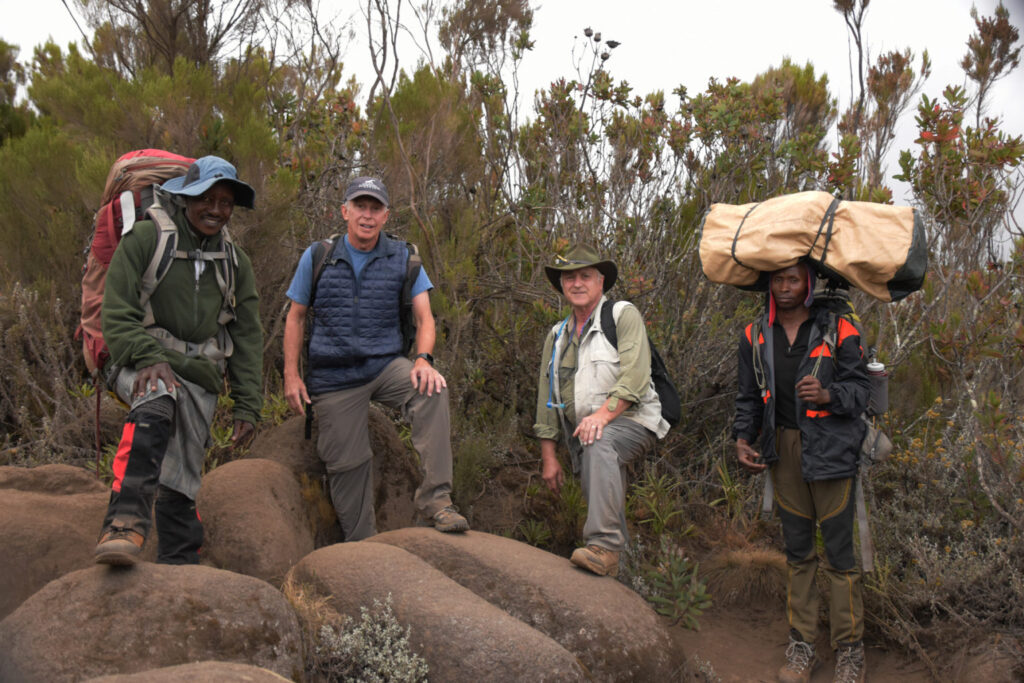
Our original plan was to attempt the climb 10 years ago at age 60, but that somehow got back-burnered and we postponed the challenge to age 65. Again, other commitments intervened. So, upon reaching age 70, we decided that, if we didn’t do it now, we never would.
After graduating from Cornell’s College of Agriculture and Life Sciences back in 1974 and not going on to vet school as we thought we might, both Rick and I pursued careers in the zoo and wildlife fields. He worked for years at the San Diego Zoo, helped design and direct Disney’s Animal Kingdom, recently retired after 15 years as director of the Houston Zoo, and now owns and operates Longneck Manor, a nonprofit conservation park for giraffes and rhinos just outside Fredericksburg in the Texas Hill Country. My career path included stints with organizations such as the World Wildlife Fund, Conservation International, the Mohamed bin Zayed Species Conservation Fund, and Global Wildlife Conservation (recently re-branded as Re:wild). I also spent five years working closely with Rick at the Houston Zoo, helping him build a world-class international wildlife conservation program.
Truth be told, climbing Kilimanjaro, a dormant volcano in Tanzania located about 210 miles south of the equator, was more Rick’s idea than it was mine. He’s been to Africa more than 50 times, climbing Mount Kenya when he was 20, seeing the Big Five (lions, elephants, rhinos, Cape buffalo and leopards) on nearly every safari he’s led, and witnessing the Great Migration of wildebeest, zebra and gazelles several times. Climbing Kili was the obvious next item on his Bucket List that needed to be checked off. Adding the adventure to my own list was a no-brainer. It was also Rick’s idea to ask our good friend, Paul Swen, to plan the trip. Paul is a highly regarded wildlife photographer and a partner in Mark Thornton Safaris.
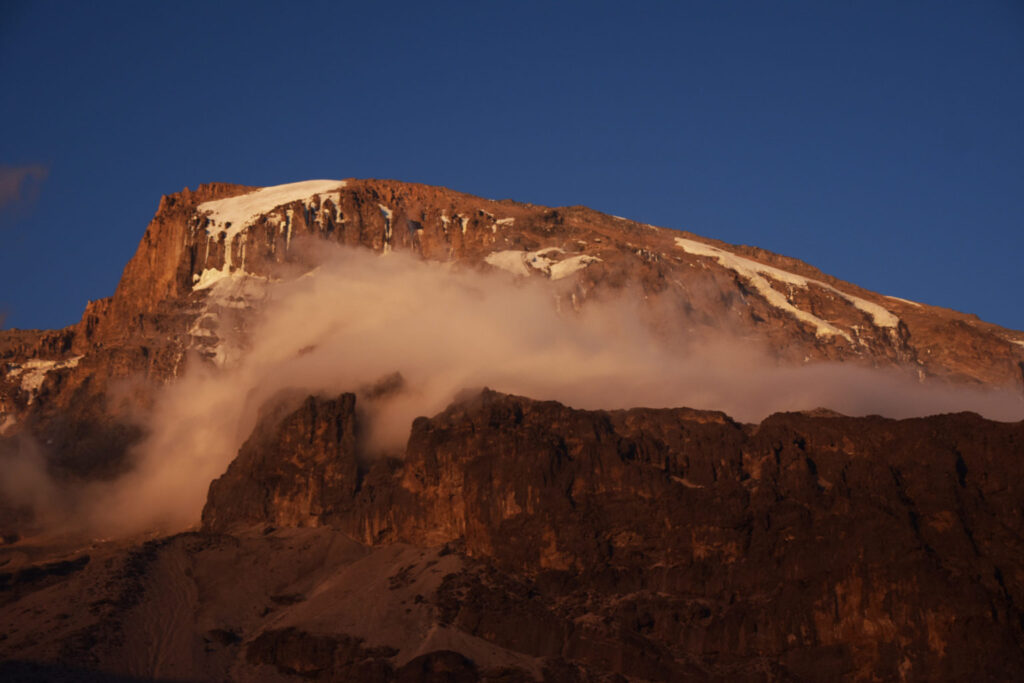
Mount Kilimanjaro is a dormant volcano. Two of its volcanic cones, Mawenzi and Shira, are extinct. The third and highest cone, Kibo, is considered dormant. Volcanologists estimate that it last erupted more than 300,000 years ago, but don’t discount the possibility of a repeat performance.
Multiple routes lead to Kilimanjaro’s summit. Paul chose the Lemosho Route for us. We approached from the west, guided by Polite Mboma and Aaron Senkuye of Nature Discovery Tanzania. Our trek began in lush tropical forest inhabited by troops of black-and-white colobus monkeys, their long luxurious coats conspicuous as they lounged high in the canopy, and the more furtive Sykes’ or blue monkeys, whose chatter and rapid movements through the branches drew our occasional attention. We proceeded pole-pole (Swahili for “slowly-slowly”) and stopped occasionally for a high-energy snack and a few sips of water. Two liters a day are what’s recommended to help ward off altitude sickness.
Daylong treks to the Shira I and Shira 2 Camps brought us to a rocky savanna dominated by spectacular succulent plants. Giant groundsels towered above us, bringing to mind the Truffula Trees in The Lorax by Dr. Seuss. Among the birds, alpine chats and common bulbuls flitted about the surrounding vegetation at eye level, while dusky turtle doves and white-naped ravens patrolled the camps, constantly on the lookout for scraps of food. Our bird-watching highlight, however, was the magnificent male malachite sunbird that posed so proudly for a photo atop a giant lobelia. Resident mammals were scarce above 12,000 feet, but we thoroughly enjoyed the antics of a brave little four-striped grass mouse, whose markings reminded us of a chipmunk, and were surprised by how closely the common duikers allowed us to approach. Clearly, these small hoofed animals have become habituated to people in the sanctuary of this national park, as they can be subjected to heavy hunting in unprotected parts of their range.
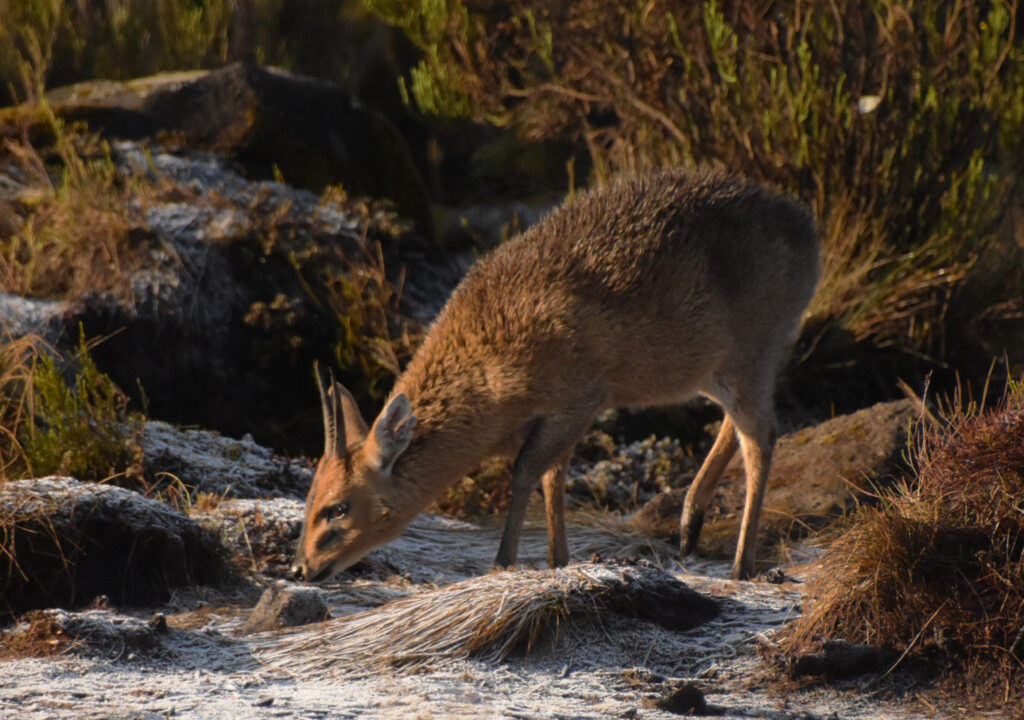
Another two days of hiking in the high desert led to the Barranco and Barafu Camps. The most ominous feature of our trek – aside from the daunting view of the summit itself those rare moments that it emerged from the clouds – was the Barranco Wall. On the night of October 18th, Rick and I camped on a plateau across from the base of the wall, a sheer and intimidating rock face that towered hundreds of feet above us. Fortunately, scaling Barranco is not nearly as difficult as it looks. Climbers categorize the ascent as a ‘scramble’, which suggests that it does not require advanced mountaineering skills. Still, the path is steep and narrow, and at one point climbers have an opportunity to ‘kiss the wall’, their bodies essentially being pressed up against the rocks.
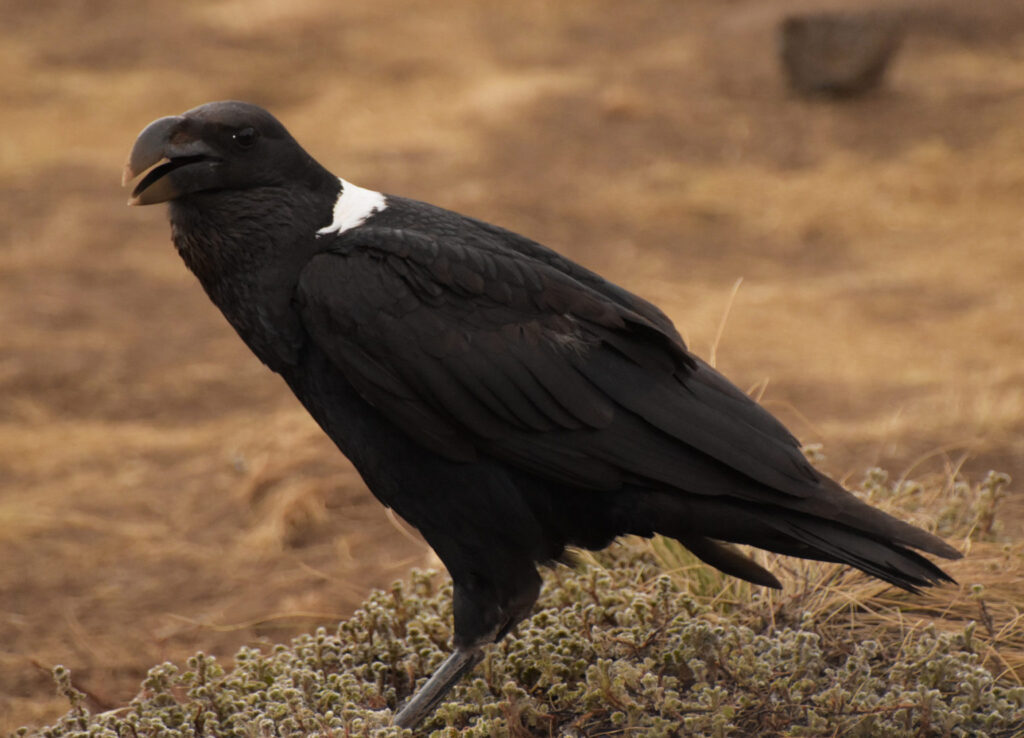
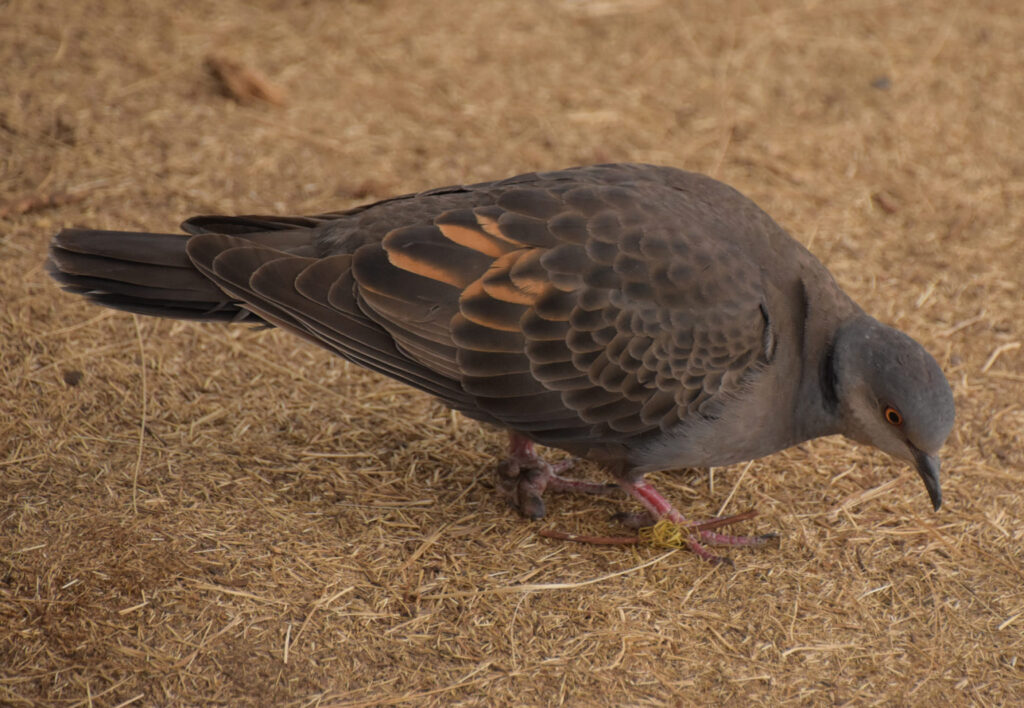
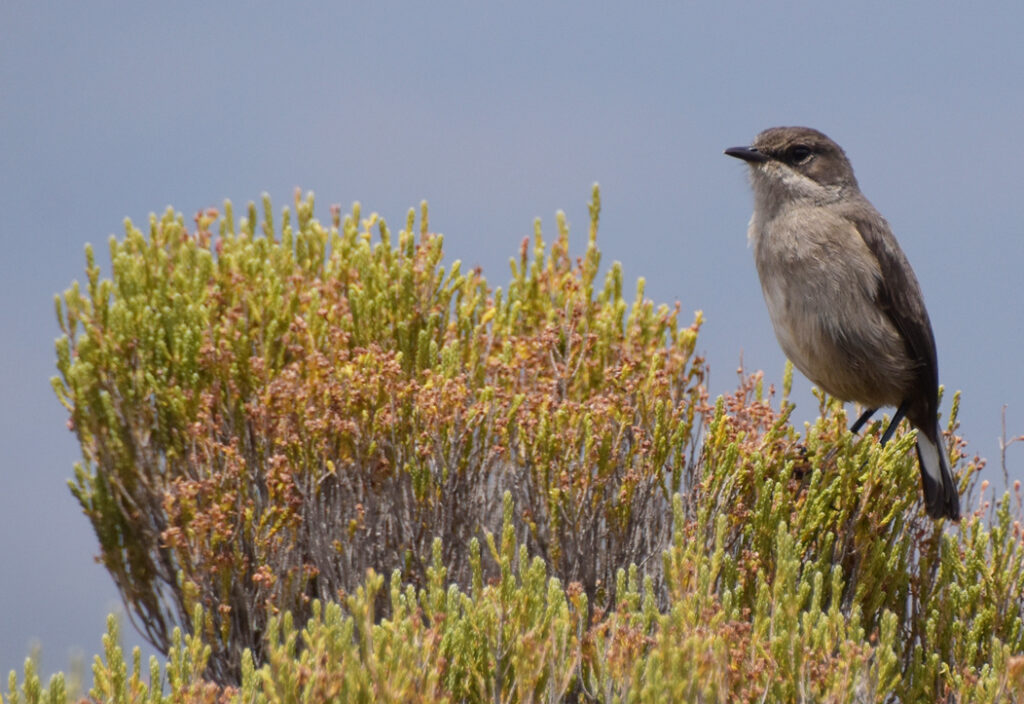

En route to the Barafu Camp on the morning of October 19th, while stopping briefly for a little snack and some rehydration, Rick strolled a few dozen yards up the mountain and pulled out his cell phone. Service is very spotty on the mountain, but certainly worth a try when the cloud cover is light or absent. I glanced up to see Rick up ahead and hear him call out, “It’s a girl!” It, you see, was the first giraffe to be born at Longneck Manor. Rick had thought the calf would arrive before he left for Africa, but calculating the delivery date for an animal with a 15-month gestation period can be difficult. He had received a text the day before suggesting that the birth was imminent, so the blessed event was not a surprise. But everyone was hoping for a female, a fine young specimen who goes by the name of Kili Rose. You need not guess how the first part of her name came to be.
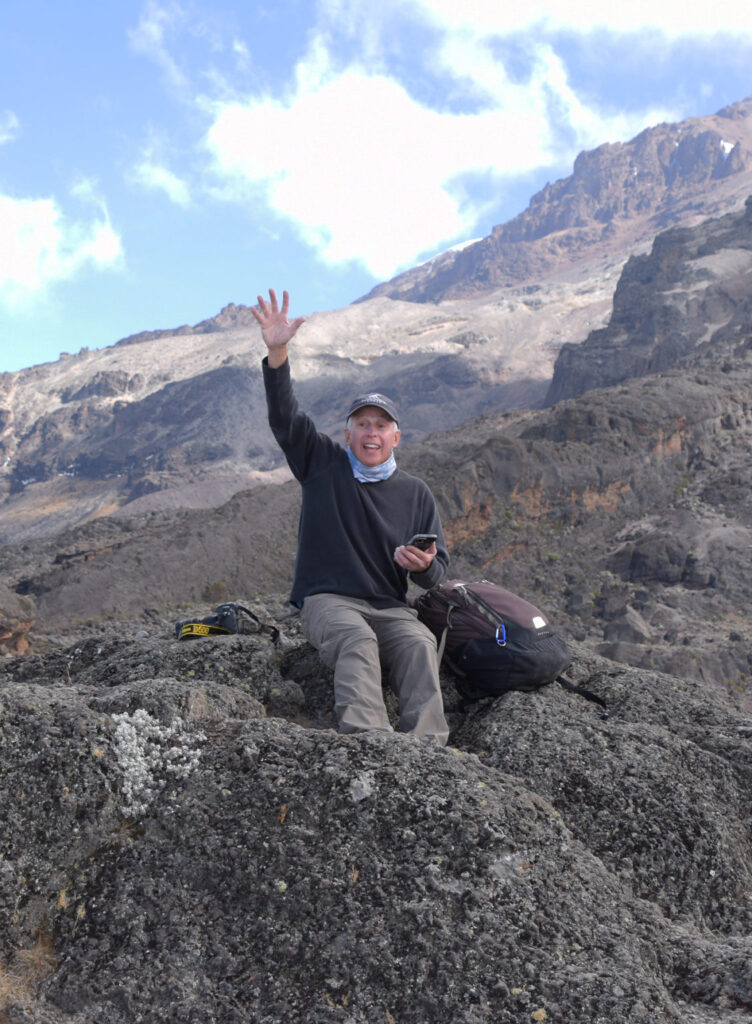
Over the past four days, Rick and I climbed less than 3,000 feet – this phase of the ascent allowed us to adjust to lowering air pressure and oxygen availability. The oxygen in Earth’s atmosphere is less available to our lungs at higher altitudes than it is at sea level. At 10,000 feet (essentially the altitude at which we began our climb), oxygen availability decreases to just under 70%. At 15,000 feet it falls to under 60%, and at Kilimanjaro’s summit – over 19,000 feet – your lungs are fighting for less than half the oxygen they’re able to absorb at sea level. Our next step – climbing nearly 4,000 feet in a single day of breathing very deeply – would take us to the summit.
And yes, we had big plans for the occasion, including numerous photos donning multiple hats and t-shirts that featured different logos. In the end, however, we succumbed to the bitter cold and wicked winds, posed for just a few images, gazed upon this equatorial mountain’s last glacial remnants, and savored the achievement of a lifetime. I find it difficult to capture the emotion of the moment in a single word or sentence but can attest to the extent that this accomplishment has boosted my confidence. Rick was in better shape for the climb than I was. I should have hiked more beforehand and lost some weight in preparation. As it turned out, I did shed 10 pounds in the ordeal.
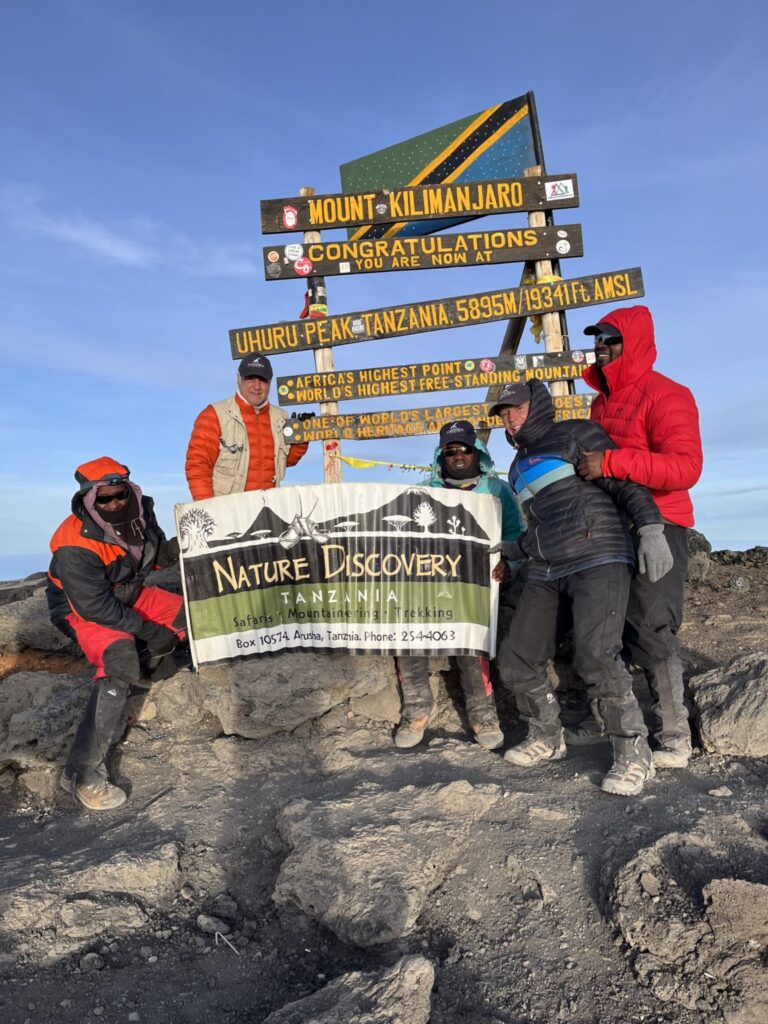
It took us six-and-a-half days to summit Kilimanjaro, but only a day and a half to descend by a different, more direct route. Lunch awaited us at the bottom, including a couple of much-appreciated Kilimanjaro Premium Lagers and our official mountain climbing certificates. The beers helped me regain five of the 10 pounds that I’d lost.
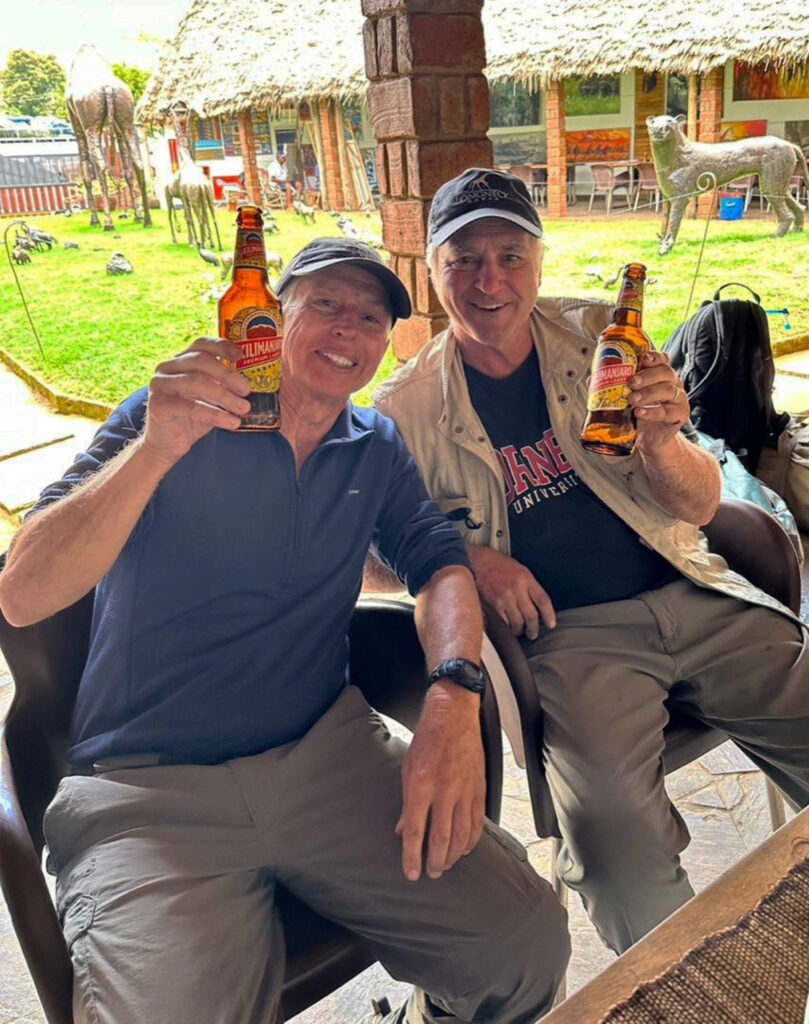
After a day of much-deserved rest at the Ngare Sero Lodge in Arusha, Paul Swen joined us for the finale of our African adventure – four days observing wildlife in Tanzania’s Tarangire National Park. But that’s another story!
